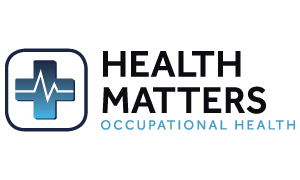
HSE have now released their Health and Safety at Work Summary Statistics for GB in 2018. January is a great time to take stock of your workplace, so if your New Year’s Resolution at work is to improve the health of your employees, it might be useful to learn some of the key statistics and how to ensure your workplace avoids becoming another one!
Work-related ill health
In 2017/2018, 1.4 million workers suffered from work-related ill health, resulting in 26.8 million working days lost. There was a staggering 13,000 deaths estimated to be linked to past exposure of dust of chemicals at work, with occupational lung disease accounting for 12,00 of these deaths.
A work-related illness or occupational disease is a health condition that results from your work duties or exposure to hazardous conditions or substances at work. In order to mitigate risks of developing work-related ill health, it’s important to complete risk assessments to determine when, where and how work-related ill health could develop. One way to help detect, control and evaluate work-related health is by health surveillance.
Health surveillance is a system of ongoing health checks. These health checks may be required by law for employees who are exposed to noise or vibration, radiation, solvents, fumes, dusts, biological agents and other substances hazardous to health, or work in compressed air.
When is health surveillance conducted?
Criteria for conducting health surveillance includes occasions when:
- An individual is being exposed to a hazardous substance that is linked to an identifiable disease of adverse health effect
- There is a reasonable chance that the disease or adverse health effect may occur under the conditions of work
- There are valid techniques of detecting the disease or adverse health effect
Employers often choose to incorporate Fitness to Work Assessments within Health Surveillance programmes, examples include:
- Night Worker Assessments
- Safety Critical Worker Assessments
- Other Industry-specific or statutory assessments
We can make recommendations and create a Health Surveillance programme based on the specific needs of a business.
It’s important to note however that health surveillance should not be used as a substitute for undertaking a risk assessment or using effective controls. Health surveillance does not reduce the need to eliminate or manage health risks.
For industries where there is a risk of harmful chemicals and dust, it is also vital that PPE is worn. PPE exists to help safeguard the well-being and safety of workers and is vital in terms of best practice and risk mitigation.
PPE includes items such as safety helmets, gloves, eye protection, high-visibility clothing, safety footwear and safety harnesses. It also includes respiratory protective equipment (RPE). PPE Should be regarded as a last resort to protect workers health and safety; engineering controls and safe systems of work should be considered and implemented first, and then PPE considered if there is still a risk of hazard. To make sure the correct type of PPE is chosen, it’s important to consider the different hazards in the workplace and identify the PPE that will provide adequate protection against them; this will differ from job to job in each industry. Click here to read more.
Work-related stress, depression or anxiety
The rate of work-related stress, depression or anxiety has increased over the last number of years, with 595,000 employees suffering from this in 2017/2018. The largest contributing cause to workplace stress, depression or anxiety was due to employee workload. Total working days lost due to stress, depression or anxiety accounted for 57% of all working days lost due to ill health. It’s vital that all workplaces recognise the significance of looking after their employees’ mental health.
Our sister company, Health Matters Health & Safety offer a number of services that can help manage workplace mental health. Their 2-day Mental Health First Aid course (approved by Public Health Agency) has been devised to increase the knowledge and confidence of participants, enabling them to provide first aid and support for people experiencing mental health problems at home and at work. It encourages participants to recognise signs and symptoms of mental ill health and respond appropriately. Click here to read more.


